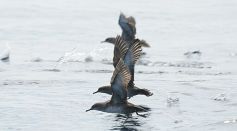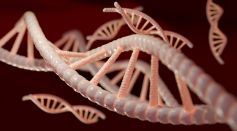Tags: Endangered animals

Europe’s Most Endangered Seabird Shifts Migratory Pattern, Holds Key in Surviving Climate Change
‘Exotic’ Cultivated Meat Not As Harmless as Previously Claimed, Could Threaten Endangered Animals

Robotic Buoys Developed to Establish 'Right Whale Slow Zones,' Minimizing Casualties from Ship Collisions

Whale Shark Populations Mysteriously Decline, Here’s Why According to Study

Are Komodo Dragons Endangered? First Successful Hatch in Australia May Help Solve Population Problem

Stuffed Endangered Animals Seized: Over 1,000 Taxidermied Species Discovered in a Shed in Betera, Spain

DNA Through Air: Scientists Propose New Way of Tracking Endangered Animals in the Wild
Tapanuli Orangutan: Rarest Great Ape Is in Greater Danger Than Previously Known
503 New Species Identified By Scientists in 2020

33% of Lemur Species Are on the Brink of Extinction, Deforestation and Hunting Are to Blame
Hope Rises for Endangered Hainan Gibbons After Union of New Pair
14 Tons of Pangolin Scales in Single Illegal Shipment Confiscated by Singaporean Officials
Must Read: Drug-resistant Bacteria Has Been Found In Orca's Breath Likely Caused By Human Contamination
Endangered Species Act Saved Animals From Extinction, US Calls For Sterner Law Implementation
Most Popular

Trump Administration Declares COVID-19 Likely Originated from Wuhan Lab Leak, Citing Scientific Evidence

Mysterious Structures Discovered Beneath the Pacific Ocean, Puzzle Scientists

Largest Known Volcanic Aquifer Discovered Beneath Oregon's Cascades

New 'Supergiant' Sea Bug Found in South China Sea, Named After Darth Vader





